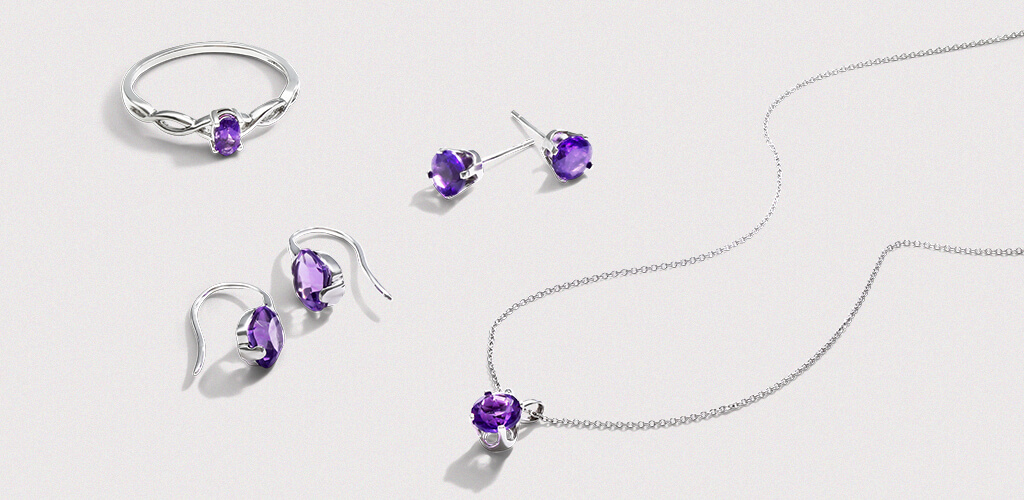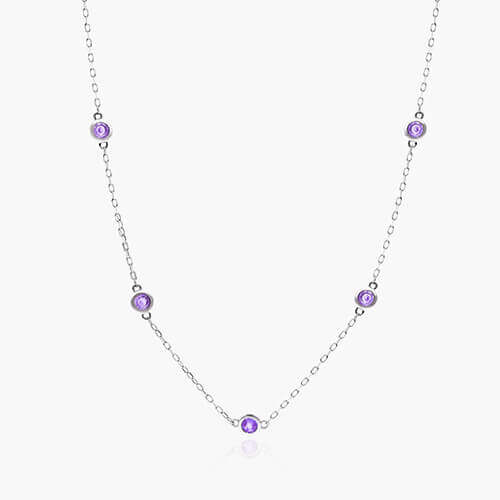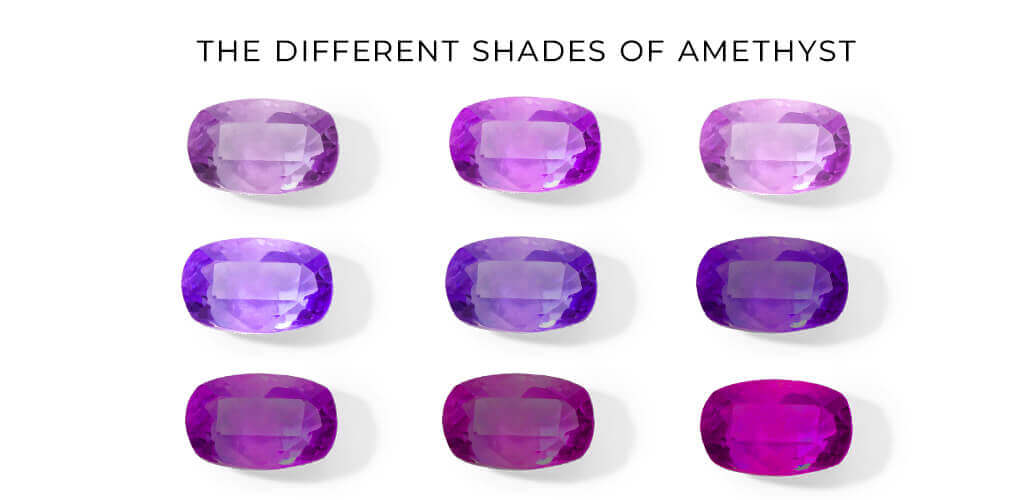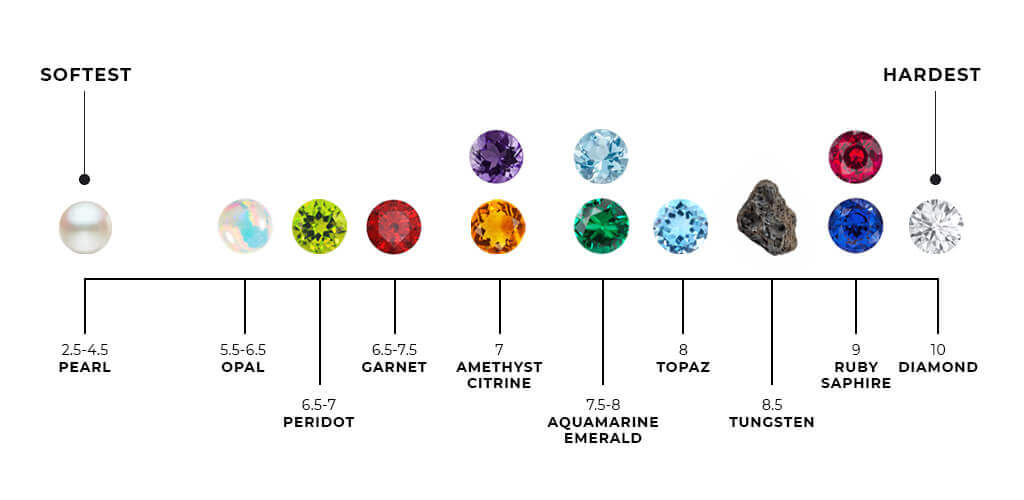
February is one lucky month because it can boast amethyst as its birthstone. Once reserved for royalty, this luxurious gemstone is known for its beautiful purple color. Read on to learn all about this gemstone and get that regal feeling.
February’s birthstone is amethyst. This precious gemstone, which gets its name from the Greek word amethystos, meaning not drunk (more on this below), is as beautiful as it is meaningful. Whether you love this gemstone for its stunning purple hues, its symbolism, or you’re just ready to enter your royal-era, amethyst is a great choice. Wear this gorgeous gemstone day or night, for casual or fancy events, because in addition to everything else, the February birthstone is versatile.

There are many beliefs associated with this stunning gemstone. Ancient Greeks believed it could keep you sober, while others believe amethyst brings strength, clarity, and provides protection for those who wear it.
This gemstone is also associated with keeping a clear head, staying calm, and even healing wounds. Many wear amethysts as a means of stress relief and in an effort to attract positive energy. Some even believe amethysts can help strengthen your immune system.
Amethysts are known for their purple color. This color is derived from the presence of trace elements such as iron, as well as natural irradiation. This process occurs naturally in the earth over the course of millions of years. This color can range from light lilac to a deep, dark purple with reddish tones.
Amethysts can also be heat-treated to achieve other colors including green, blue, and yellow. However, at this point they are no longer considered to be amethysts.

While amethysts are stylish gemstones now, they actually have a long history. In ancient Egypt, they were used for protection, as well as in prayer. In medieval Europe, soldiers wore Amethysts to protect them in battle. This stone even appears on the Breastplate of Aaron in the Bible and St. Valentine is said to have worn an amethyst ring with a carving of cupid on it.
Amethysts were not just reserved for royalty, but they were beloved by them, including Catherine the Great of Russia who had an entire collection of amethyst rings, earrings, and more. Wallis, the Duchess of Windsor was also said to favor the gemstone, famously wearing an amethyst necklace to a gala in 1953.
Amethyst ranks 7 on the Mohs hardness scale. What does this mean exactly? It means that the February birthstone is durable enough for everyday wear but that you should still be careful around harder gemstones, because those can scratch and dent your amethyst.

Like all precious gemstones, it is important to properly care for your amethyst jewelry so it will stay as beautiful and bright as the day you buy it. You want to keep it clean and avoid scratches and dents as much as possible.
Follow these tips to protect your February birthstone jewelry.
Follow these tips to clean your February birthstone.
The main birthstone for February is amethyst, it is both the modern and traditional choice. An alternative option, Jasper is also considered a birthstone for February.
When looking for your amethyst gemstone jewelry, keep these pointers in mind:
Just like the stars of the gem world, amethysts are graded with the famous 4Cs. Hunt for that rich purple color, clear appearance, a sharp cut that catches the eye, and, naturally, the bigger the better!
No matter if you’re after something striking or a subtle addition to your everyday look, amethyst jewelry is your new go-to.
Craving more? Swing by James Allen’s amethyst collection. Whether you’re treating yourself or searching for a special gift, whether you were born in February or just love the color, dive into our diverse selection of exquisite, handcrafted amethyst pieces that are as enchanting as they are meaningful.
February’s birthstone, amethyst, not only boasts historical significance but dazzles with its stunning hues, making it an elegant and enchanting choice for jewelry any time of year. Why not add a piece of this majestic purple gemstone to your collection today?
There is a risk that if exposed to extreme heat or sunlight, the color of your amethyst can fade or change.
There are numerous benefits. In addition to the incredible style amethysts add to your look, they are associated with healing and protection.
The color for February is purple, the color of its birthstone amethyst.